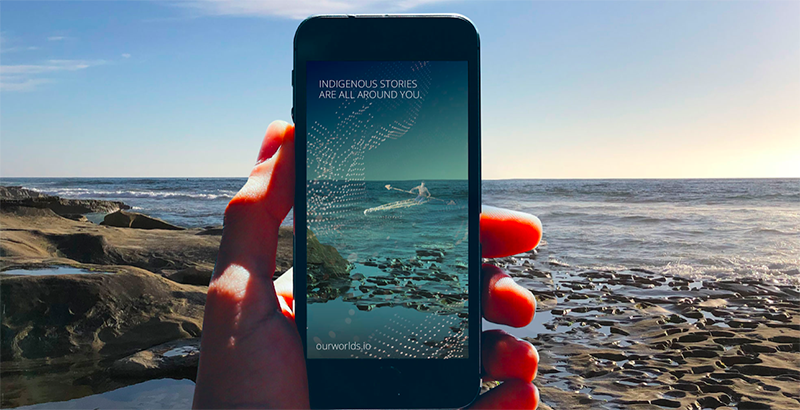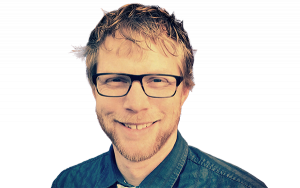SXSW EDU Launch Winner Our Worlds Bringing Native American Culture to Life Through Mobile-Based Immersive Reality

Get stories like this delivered straight to your inbox. Sign up for The 74 Newsletter
Take a stroll along the La Jolla Shores Beach in San Diego, and you might find sand between your toes. But users of the new Our Worlds app, winner of the 2022 SXSW EDU Launch Competition, might also find much more. Through augmented reality, they can look at that same stretch of beach and see handmade tule boats from the local Kumeyaay tribe.
Our Worlds launched to highlight Native American history via modern-day technology, putting what founder and CEO Kilma Lattin calls “code to culture” and pushing Native American civilization forward. Lattin says Our Worlds offers a full suite of technology — virtual reality, augmented reality, artificial intelligence — to capture all the components that make a culture.
Our Worlds created proprietary XR360 technology using 360-degree video overlaid with content. Both written and spoken Native language is superimposed over everyday objects or landscapes; artifacts are inserted into real-time environments; modern landscapes merge with historical images so users can see what a place looked like at certain points in time.
“The tool we have created,” says Catherine Eng, Our Worlds co-founder and chief technology officer, “can provide a view of a different reality for a different place.”
The app itself has multiple avenues for exploration. One option depicts Native artifacts virtually, allowing exploration through a hologram-like function, while another lets users explore the items, such as the tule boat, in their historic locations. Users can open the app when on the beach, for example, and use the camera mode to pan across the sand. These boats then pop up along the shore in an augmented reality state. Kumeyaay professor Stanley Rodriguez provides a narration that explains the boats’ history and how to harvest the reed-like tule plant and use it to build a canoe.
Geolocation settings personalize Native history to the user’s location and offer primary-source accounts, such as a Choctaw Code Talkers lessons that features a four-minute video reconstructing messages used on the World War I battlefield. It’s a vivid demonstration of how the Choctaw language helped change the course of the war.
“What we are able to do is geolocate cultural content wherever it is relevant,” Lattin says. “If there are stories in Austin, Texas, relevant to that place, we can build a story and geolocate it there.” In the less than two years Our Worlds has existed — and only the few months that the beta version has been available — the app has grown to include content in San Diego, Oklahoma, Washington, D.C., and even France. “We are bringing a lot more meaning to place,” he says.
Augmented reality, Lattin says, gives a window into life the way it was centuries ago. “If you find yourself in Times Square and want to know what was there before the buildings and pizza and lights,” he says, “use our software to scrub back and erase the buildings and connect with primary sources who know about the land from before, giving more meaning to the places we live, work and travel.”
Eng says the potential for K-12 curriculum means Our Worlds could become a powerful teaching tool. “We have a lot of ideas about cool stories that could complement what is being taught in the classroom,” she says. “We are very interested in finding ways to serve that as best we can.”
The big picture of Our Worlds, Lattin says, enables education to unfold around you where you go. As Our Worlds builds out a larger library of primary source content, from digitizing maps to show how a place once was, dropping artifacts onto sandy beaches or telling historical stories, Lattin says this is about more than Native American culture. It is about all culture.
Since winning the SXSW Launch competition, Lattin — who started with his own Native American background — has been talking with other cultural groups to help tell their stories. “We want to take a communal approach to world building where there is no shortage of communities we can serve, no shortage of cultural stories we can tell,” Lattin says. “We want to make this relevant for everybody, take a different approach to building digital futures with immersive realities.”
Get stories like these delivered straight to your inbox. Sign up for The 74 Newsletter

;)
